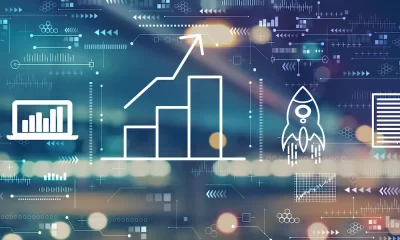Technology
How Data Visualization Has Changed Businesses

Data visualization is a powerful tool for businesses to unlock the value of their data, drive informed decision-making, and gain a competitive edge in today’s data-driven environment.
This article looks at data visualization and how using it to its fullest progresses business to the next level.
What is Data Visualization?
Data visualization is a process by which information, such as data and stats, are converted into illustrative or graphical formats. Among the most common visual forms of data include pie graphs, line charts, and bar graphs. These types of information visuals can depict even large sets of data.
For larger and even more complex sets of data, on the other hand, there are other types of data visuals to better render such information, including:
- Histograms
- Scatter plots
- Box plots
- Heat maps
- Choropleths
- Sankey keys
The primary objective of the data visualization method is to render information in pictorial or graphic format to make the data appear much more straightforward and more accessible to comprehend.
For most people, making sense of information presented through visuals is far easier than looking at it in plain text or a worksheet.
How Has Data Visualization Helped Changed Businesses
Computer technology has continued to improve in the past few years with the capabilities of computers that run data visualization apps.
Excel is, hands down, the most popular data visualization tool. However, far more powerful tools can even be operationally specific to your type of business.
Data solutions providers like MicroStrategy usually provide and design powerful data visualization software. Here are a few ways that data visualization has helped businesses.
1. Improved and Enhanced Understanding of Data
Interactive data visualizations enable users to explore data independently, discovering insights that might not be apparent through static reports.
Data rendered and communicated through pictographs are more accessible to grasp and comprehend. This takes the burden off of data scientists to explain the figures.
Some data visualization tools may even be enough to make the services of data scientists redundant in some businesses.
Even a glance at a data visual like a pie graph, perhaps, and you’ll understand that the chunks and slices represent a part of a whole. You’ll also be able to quickly assess ratios and proportions in a pie graph. This quick deductive reasoning applies to all data visualization types.
Make Comparative Evaluation of Data Easier
Since data visualization enables you to understand the information more efficiently, the same goes for comparing and evaluating the information. For example, you can render actual sales and the goals you have set for your business either in a bar chart or a line graph.
Such information will show you whether you are achieving or surpassing your goals and if your business strategy was effective.
Gain Vital Insight
If you can understand the data quickly, detecting patterns and the influencing variables will also be easier. With such insight, you can increase your revenues or set buffers to prepare for possible setbacks.
Data visualizations can also reveal operational outliers that are bringing your stats down.
This information has undoubtedly helped businesses change for the better. What makes data visualization even better is that you can also use it to spot emerging trends that you can take advantage of in the coming year to grow your business.
In such a competitive market, having the ability to comprehend, conclude, and strategize quickly may be the edge that you need against your competition.
Therefore, identifying trends and patterns in the data helps businesses understand market trends, consumer behavior, and other critical factors.
Some other evident benefits of data visualization include:
- Real-time monitoring – Dashboards and real-time visualizations allow businesses to monitor key performance indicators (KPIs) and other metrics in real time, facilitating quicker responses to changing conditions.\
- Operational Efficiency – Visualization tools can streamline reporting processes, saving time and resources. Automation of data visualization allows for quicker and more efficient analysis
- Risk Management – Businesses can use data visualization to identify potential risks and uncertainties. Visualization helps understand the impact of different scenarios, aiding in risk management strategies.
- Data-Driven Culture – Data visualization promotes a data-driven culture within organizations. It encourages employees to base their decisions on data rather than intuition alone
Summing Up
Data visualization is the graphical representation of data to provide insights, identify trends, patterns, and relationships, and aid decision-making.
It involves creating visual elements like charts, graphs, and maps to make complex data more accessible and understandable. The primary goal of data visualization is to communicate information clearly and efficiently.
Data visualization has become an indispensable tool for businesses to analyze and communicate complex data. Its adoption has led to more informed decision-making, improved operational efficiency, and a better understanding of business operations.









